Patricia Highsmith, who was born 100 years ago this month, was already known as a giant of suspense fiction at her death in 1995. Since then, while the stock of some of her literary contemporaries has gone down (think of Saul Bellow, Gore Vidal, or Norman Mailer), her reputation as a writer of serious artistic and philosophical achievement has increased. The 21st century – when imposture is at the heart of online life, when self-identification precedes authenticity – seems more and more like the age of Tom Ripley, Highsmith’s greatest creation.
Less well known, however, is that the final publication Highsmith oversaw was not about murder or secrecy or guilt, but about drawing. In perhaps the last piece of writing that she ever completed, the foreword published in German in Patricia Highsmith: Zeichnungen (Diogenes), the book of her drawings and paintings that appeared posthumously in 1995, Highsmith argued for the unity of writing and visual art:
Why should it be surprising that many writers enjoy drawing or sculpting? Perhaps some of them also have a go at composing here and there. All arts are one, and all art – ballet too – is a means of telling stories. A picture also tells a story. [author’s translation]
While Highsmith claims not to take her own art very seriously (‘I enjoy it when I succeed in a picture; and if a friend likes it, I say, “If you like, you can have it”’), she also has a keen sense of what writing and drawing shared, and how they differed:
Drawing, painting, modelling – in my case also making tables or other things out of wood – means that you live in another element for a while. For the writer, the art of the painter is something totally other, and wonderful: a picture can be seen and grasped and understood in an instant, whereas it takes much longer with a book or a short story…
Part of the value of making images and objects, then, is that it allows you to become absorbed in another element. In 1989, unwell and beset by worries, Highsmith reminded herself in her diary to ‘put more variation in my life, such as drawing & carpentering’. Throughout her life she was attracted to making as a way of imposing order on her surroundings, whether it was in her tool-shed or in her contributions to the design of ‘Casa Highsmith’, the almost windowless house in Tegna, Switzerland, that she helped to design for herself. (‘Hitler’s bunker’, a friend called it.)
But the painter also has one advantage over the writer, in the immediacy with which their creations can tell a story. For a novelist who was so dedicated to the careful elaboration of plot, it must have sometimes seemed an enviable position. As well as putting fictional painters into her novels on a number of occasions, bringing one form of storytelling into another, Highsmith produced drawings, watercolours and gouaches throughout her life. The 106 images chosen for Zeichnungen, none of which had been exhibited or published before, are taken from many hundreds, spread between dozens of sketchbooks, that now reside in her archive in Switzerland. In the best of them, Highsmith demonstrates a spontaneous facility for seeing and shaping the truth of an image, which makes her drawings something more than just a sideline to her writing life.
Throughout Highsmith’s life, she had close ties to the visual arts. Her mother, biological father and step-father were all commercial artists, and her first job in New York was writing for a comic-book publisher. She was divided between pursuing a career in writing or in art for several years. ‘I was on the fence ’till I was 23 as to whether I wanted to do drawing or painting or writing’, she recalled in 1991. Naturally left-handed but forced by schoolteachers to write with her right, she continued to draw with her left hand. Wherever she went, even after her novels and stories had become her life’s work, she turned out landscapes, window views, drawings of her pet cats and snails, and sketches of her friends and lovers of the time. In 1958, she even provided the drawings for a children’s book, in collaboration with her lover, Doris Sanders, who came up with the text. As the captions in Miranda the Panda is on the Veranda go from ‘A veil on a snail’ to ‘A monk and a skunk and some junk on an elephant’s trunk’, Highsmith’s jaunty drawings rise to the challenge each time, maintaining a poised and decisive line as the subjects grow more and more absurd.
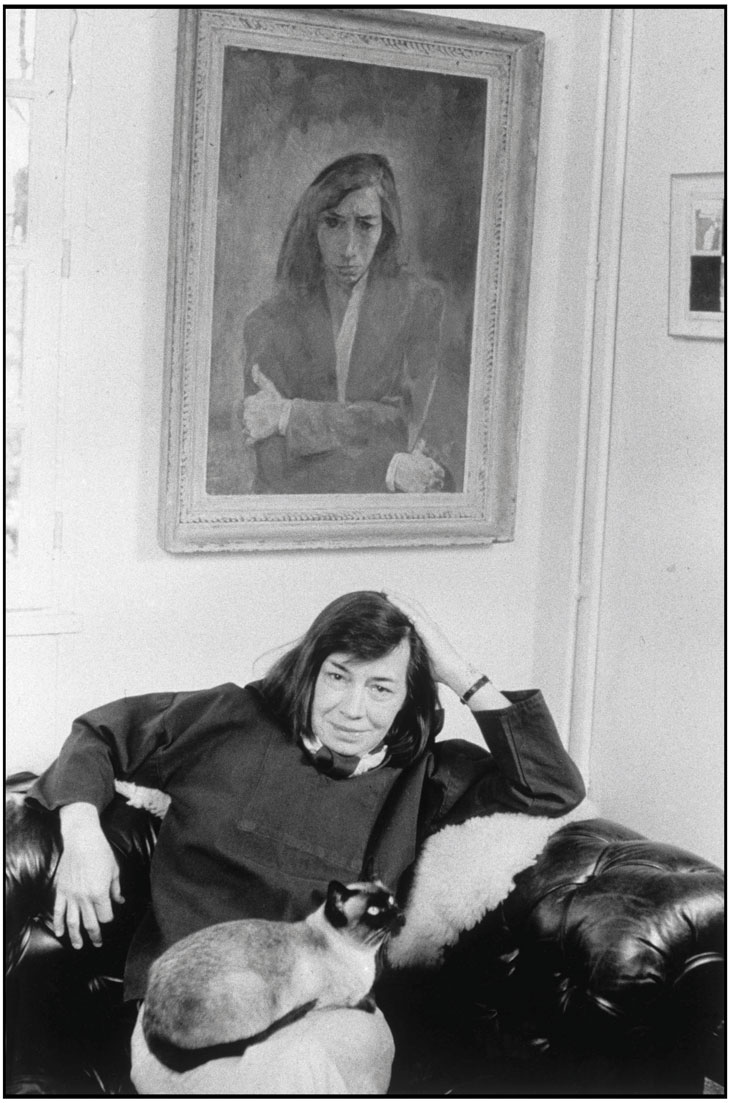
Patricia Highsmith, photographed by Martine Franck at her home near Fontainebleau in 1974. © Martine Franck/Magnum Photos
Living in Greenwich Village throughout the 1940s brought Highsmith into contact with a varied circle of friends, acquaintances and lovers from the art world. They included the collector Peggy Guggenheim, the gallerist Betty Parsons, the critic Rosalind Constable, and painters including Buffie Johnson, Lil Picard, and Allela Cornell. Highsmith and Cornell had a brief relationship in 1943, during which Highsmith sketched her new lover as a goggle-eyed tomboy with her nose in a book, and Cornell painted the oil portrait of Highsmith which the novelist would carry with her wherever she lived for the rest of her life. In that picture, the young Highsmith already resembles the older, gloomier figure she would become; her complexion seems tinted with green, and her large, dark eyes stare intensely back at the viewer.
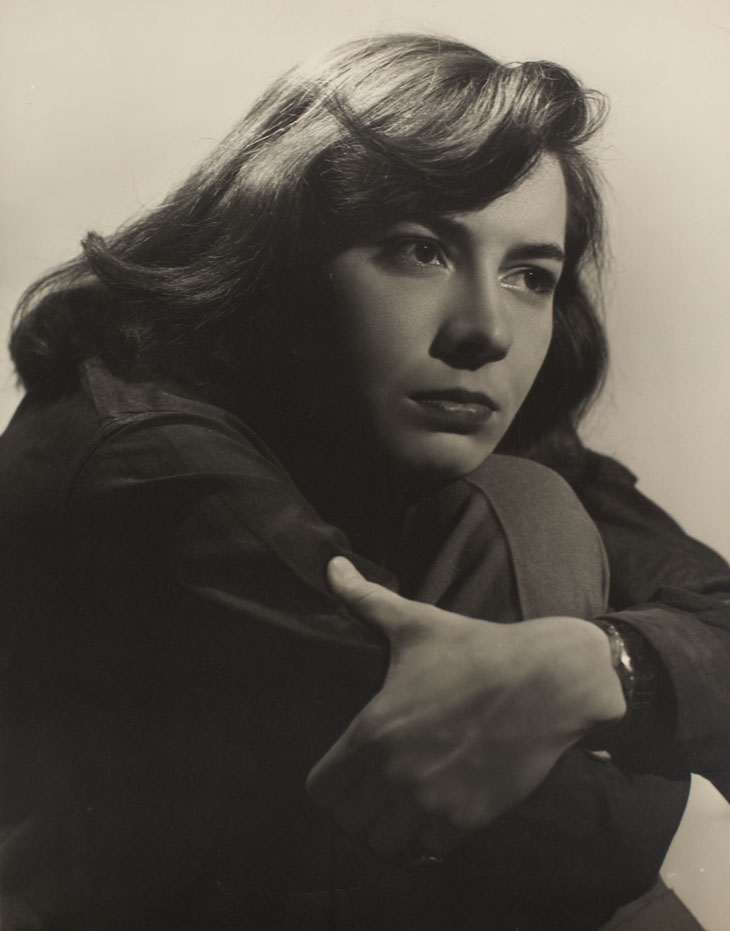
Patricia Highsmith, Writer (1948), Ruth Bernhard. © Trustees of Princeton University
A different view of Highsmith emerges from the photographs by two other friends, Ruth Bernhard and Rolf Tietgens, for whom she posed in the 1940s. Both German émigrés, the two were sharing a studio when Highsmith met them. In Bernhard’s portrait from 1948, we find Highsmith clasping her arms around a knee that is drawn up in front of her in a gesture of girlish self-protection, yet the look on her face seems one of steady purpose and confidence. It is the image which most bears out Bernhard’s opinion that ‘Pat was a very attractive person, a wonderful-looking woman, and people were drawn to her’.
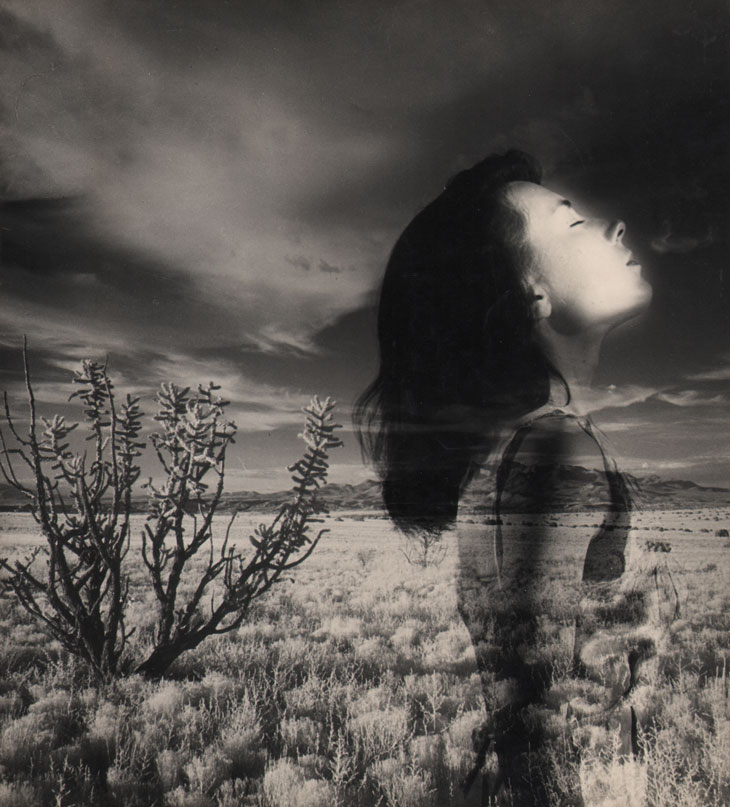
The Far Away Melody (1945), Rolf Tietgens. Courtesy Keith de Lellis Gallery, New York
Tietgens, meanwhile – one of the gay men with whom Highsmith attempted what she described as a ‘not quite successful’ sexual relationship – took nude photographs of Highsmith (he saw her as ‘really a boy’), and used her as a model in several striking surrealist photocollages. In one, The Far Away Melody (1945), she is superimposed in double exposure on a deserted rural landscape, appearing wistful and ghostly as she tilts her head upwards, eyes closed. In another from 1942, her disembodied head, with eyes again closed and hair spread out above her, floats in front of a cloudy sky. And in the weirdest of them, also from 1942, the same head has been superimposed on a crumpled sheet of paper, burnt around the edges, giving Highsmith the appearance of Christ on Saint Veronica’s veil, while scraps of burnt paper, a doll’s-house chair and window frame, and a large shell stand next to her on the stage set. Since Highsmith is a writer whose own works are so good at creating the sensation of dread and the uncanny in the reader while never departing from the grammar of realism, it is striking to find her image at the centre of a work which summons its own sense of poetry through surreal juxtaposition.
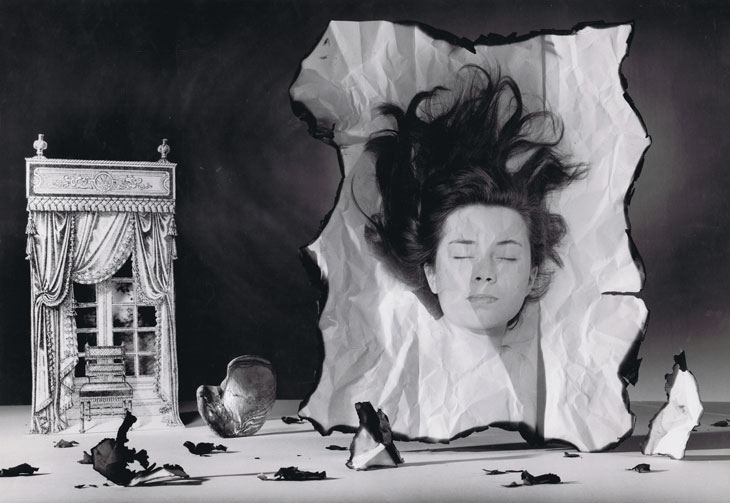
Patricia Highsmith (1942), Rolf Tietgens. Courtesy Keith de Lellis Gallery, New York
Highsmith was also entranced by her own image, and her self-portrait of around 1940 is a good example of the strengths of her drawings. In fluid brushstrokes of heavy black ink, the delicacy of the young Highsmith’s angular features (her oval eyes sometimes caused her to wonder if there was ‘red Indian blood’ in her family tree) is established with the mark-making economy of a cartoonist, while the set of her mouth conveys a mix of stubbornness and vulnerability. The drawing looks like the work of a few minutes, but it captures at once Highsmith’s intense strangeness to herself, and her interest in her own attractiveness. Similarly, in her pen-and-ink sketches of her adoptive father, Stanley, captured in profile hunched over his drawing pad, or of friends such as the writers Paul and Jane Bowles, Highsmith’s scratchy freehand lines capture the otherness of other people with gestural vividness.
In a different vein are works such as her drawing of Marcel Proust Examining Own Bathwater, in which she shows her mastery of caricature, or her many drawings of cats, which manage to catch the simultaneous dignity and silliness of their subjects very well, and sometimes take on a menacing, hard-bitten character. (One has the caption ‘Are ye thinkin’ on the end o’ the World?’ scrawled beneath it.) Snails, too, were a fascination of Highsmith’s – she liked to watch them mating, and stories abound in which she takes them to parties in her handbag, or smuggles them through airports inside her bra – and her charcoal drawings of some of her large family of pet snails from the 1960s brood over their gelatinous, genital-seeming flesh with evident visual excitement.
Many of Highsmith’s drawings and paintings also address themselves to landscapes, following the course of Highsmith’s nomadic life, from the Fort Worth, Texas of her childhood, to Mexico, New Orleans, the artists’ colony in Yaddo, Munich, Salzburg, and many Italian towns and cities. Among the latter, her drawings of the cliffside village of Positano on the Amalfi Coast stand out. In the pen and watercolour sketch that looks out over Positano from the balcony outside her room at the Hotel Miramare, a rocking horse stands on the terrace with the dramatic curve of the bay framed behind it, turning the village into a stage set rich in dramatic possibilities.
The concerns of Highsmith’s pictures bleed into the concerns of her books. In her best-known novel, The Talented Mr Ripley (1955), Positano becomes Mongibello, the village to which Tom Ripley tracks down the playboy Dickie Greenleaf. Highsmith recounts the moment of initial inspiration for the book as one framed by the view in her drawing: at six o’clock one morning she was looking out over the village from her balcony when she saw ‘a solitary young man in shorts and sandals with a towel flung over his shoulder, making his way along the beach from right to left’, with ‘an air of pensiveness about him, maybe unease’. This single image was enough to set her imagination on the journey that would bring Ripley’s character into being.
And just as Ripley seemed to step out of a picture, painting is also a central concern in several of the five novels featuring Ripley that Highsmith would go on to write. When Tom is introduced to readers in the first instalment, it is Dickie who thinks himself a painter – a sure sign that he is wasting his life, according to his industrialist father, who charges Tom with the task of bringing him back to the United States. When Tom looks at his ‘wild and hasty and monotonously similar’ landscapes and his gauche surrealist portrait of his girlfriend, he winces ‘with almost a personal shame’ at Dickie’s lack of talent. But after Tom has taken Dickie’s identity, he attempts a canvas of his own, ‘still in Dickie’s bright reddish-browns and clear whites’, but with improvements on Dickie’s way of rendering skies, as a means to feeling his way into inhabiting Dickie’s life. Tom also invents a painter (‘Di Massimo’) and tells people that Dickie has been taking lessons with him, to thicken the texture of the fake biography he is now constructing for Dickie.
Artists and artisans of various kinds appear as characters in several other Highsmith books, especially those written in the 1950s and ’60s. Therese in The Price of Salt / Carol (1952) is a stage set designer; Vic in Deep Water (1957) is a letterpress printer; and A Game for the Living (1958), Those Who Walk Away (1967), and The Tremor of Forgery (1969) all feature painters as secondary characters. But it is in the second Ripley novel, Ripley Under Ground (1970), that Highsmith mounts her most sustained exploration of painting. In that book, it becomes a vehicle for a searching examination of the questions of authenticity, imposture, and self-creation that lie at the heart of her work.
When we meet Ripley again in this novel, he has become a leisured, monied connoisseur and art collector; his house in the French countryside holds ‘a Soutine, of whose work Tom was especially fond, a Van Gogh, two Magrittes, and drawings by Cocteau and Picasso’. It also holds two works attributed to a painter called Derwatt – and this is where the trouble begins.
Tom’s lifestyle, we learn, has been partly funded by a scam in which forged works by Derwatt, who is in fact dead, are produced by another painter and sold through a London gallery under Derwatt’s name. When the novel begins, an American collector has become suspicious. What ensues is a tense thriller which is also a meditation on personality and impersonation in art. Part of the richness of the account of painting and the art world in Ripley Under Ground is the evident fun that Highsmith is having in imagining the forged and genuine paintings. A typical Derwatt is described as ‘a pinkish picture of a man in a chair, a man with several outlines, so it seemed one was looking at the picture through someone else’s distorting eyeglasses’. (The writer Olivia Laing has suggested that the Derwatt style resembles early Frank Auerbach.) Highsmith also relishes the debates her characters have among themselves about the evolution of painterly personality and its relation to details of technique. In no other novel does the difference between using ‘straight cobalt violet’ and ‘a mixture of cad red and ultramarine’ leave so many fictional corpses in its wake.
For Tom, the master-forger and impersonator, the fake Derwatts have as much value as the genuine ones, if not more. In thinking it through, he calls to mind Han van Meegeren, the painter famous for forging works of the Dutch Golden Age. In fact, Van Meegeren’s words seem to blur into Tom’s own:
How had Van Meegeren put it (or had Tom himself put it that way, in one of his notebooks)? ‘An artist does things naturally, without effort. Some power guides his hand. A forger struggles, and if he succeeds, it is a genuine achievement.’ Tom realised it was his own paraphrase.
Tom’s own story has been one of struggling to forge a new identity through his own inventiveness and amorality; he has conned his way into being a member of the international upper class, entitled to the best of everything. His admiration for Van Meegeren echoes Highsmith’s own: ‘I like the way he stood up for himself, saying his paintings were damn good anyway so why not like them?’, she said in 1969.
Drawing and painting, as Highsmith wrote at the end of her life, represented ways of living ‘in another element for a while’. In this way – in common with being depicted in pictures by other people, or imagining fictional paintings, whether forged or authentic – they are activities as central to Highsmith’s imaginative life as the task of crafting fictional narratives.
From the January 2021 issue of Apollo. Preview and subscribe here.
Unlimited access from just $16 every 3 months
Subscribe to get unlimited and exclusive access to the top art stories, interviews and exhibition reviews.

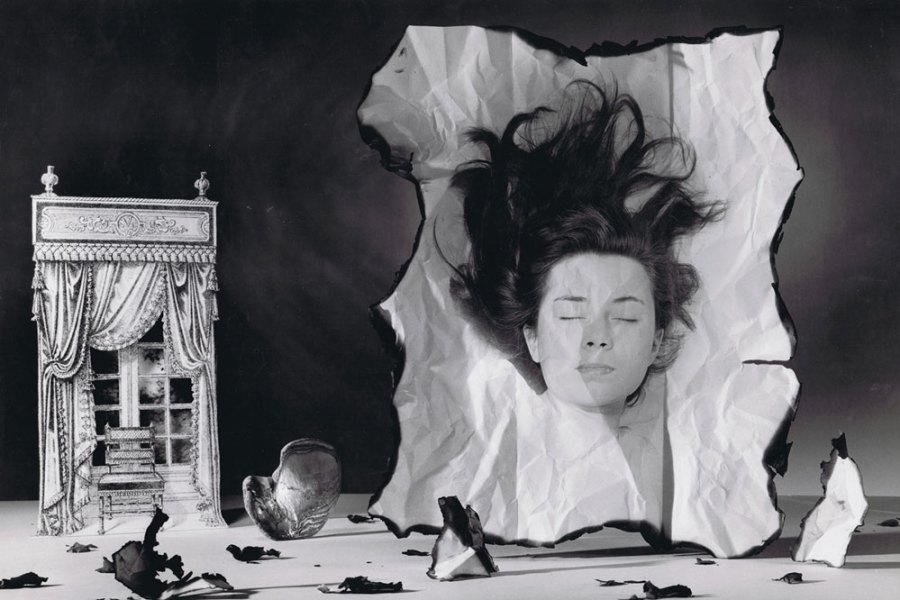
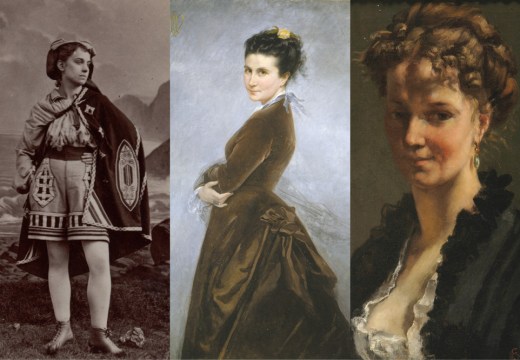
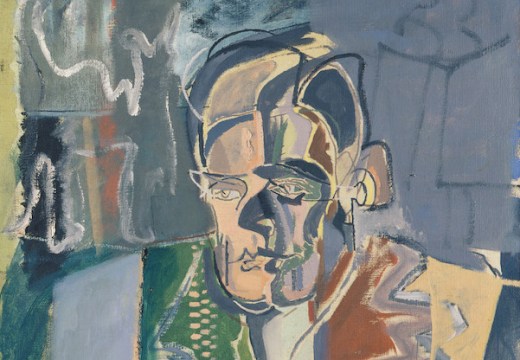
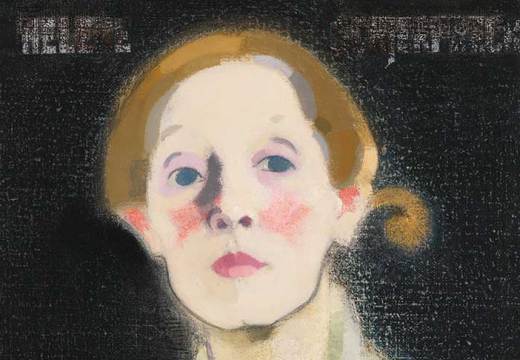









![Masterpiece [Re]discovery 2022. Photo: Ben Fisher Photography, courtesy of Masterpiece London](http://www.apollo-magazine.com/wp-content/uploads/2022/07/MPL2022_4263.jpg)
It’s time for the government of London to return to its rightful home